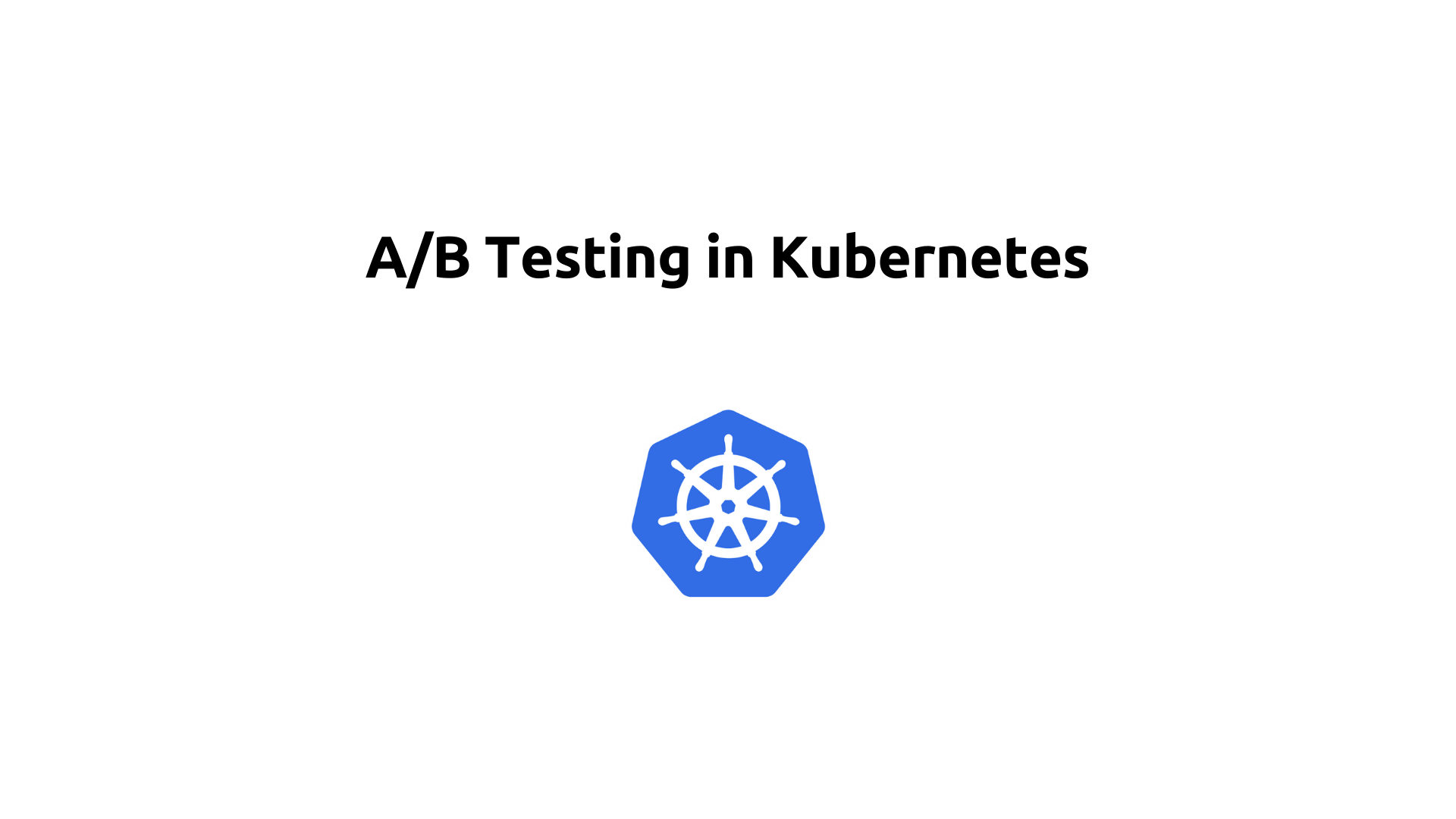A/B Testing in Kubernetes
 Saurabh Adhau
Saurabh Adhau
🎯 Learning Objective
Understand how to perform A/B testing in Kubernetes to test different versions of your application simultaneously and determine which performs better.
📖 Scenario
You need to test two different versions of your application at the same time to find out which one performs better and meets user requirements more effectively.
📘 Explanation
A/B testing involves running two or more versions of an application simultaneously and directing a portion of the traffic to each version. This helps in comparing the performance and user experience of different versions to make data-driven decisions.
🔑 Key Concepts
A/B Testing
A method for comparing two versions of an application to determine which performs better.
Traffic Splitting
Dividing incoming traffic between different versions to facilitate testing.
Istio
An open-source service mesh that provides advanced traffic management features useful for A/B testing.
📄 A/B Testing Setup with Istio
Install Istio
First, install Istio to manage traffic effectively.
Download and Install Istio CLI
curl -L https://istio.io/downloadIstio | sh -
cd istio-1.*
export PATH=$PWD/bin:$PATH
Install Istio in Your Cluster
istioctl install --set profile=demo -y
Label the Namespace for Istio Injection
kubectl label namespace default istio-injection=enabled
Deploy Two Versions of Application
Deployment YAML for Version A
apiVersion: apps/v1
kind: Deployment
metadata:
name: myapp-v1
labels:
app: myapp
version: v1
spec:
replicas: 3
selector:
matchLabels:
app: myapp
version: v1
template:
metadata:
labels:
app: myapp
version: v1
spec:
containers:
- name: myapp
image: myapp:v1
ports:
- containerPort: 80
Deployment YAML for Version B
apiVersion: apps/v1
kind: Deployment
metadata:
name: myapp-v2
labels:
app: myapp
version: v2
spec:
replicas: 3
selector:
matchLabels:
app: myapp
version: v2
template:
metadata:
labels:
app: myapp
version: v2
spec:
containers:
- name: myapp
image: myapp:v2
ports:
- containerPort: 80
Traffic Splitting with Istio
VirtualService for A/B Testing
apiVersion: networking.istio.io/v1alpha3
kind: VirtualService
metadata:
name: myapp
spec:
hosts:
- myapp
http:
- route:
- destination:
host: myapp
subset: v1
weight: 50
- destination:
host: myapp
subset: v2
weight: 50
DestinationRule for A/B Testing
apiVersion: networking.istio.io/v1alpha3
kind: DestinationRule
metadata:
name: myapp
spec:
host: myapp
subsets:
- name: v1
labels:
version: v1
- name: v2
labels:
version: v2
🛠️ Steps to Implement A/B Testing
Install and Set Up Istio:
- Follow the steps above to install Istio and enable injection.
Deploy Two Versions of Application:
- Apply the deployment YAML for both versions (v1 and v2).
Implement Traffic Splitting with Istio:
- Define and apply a VirtualService and a DestinationRule to manage traffic between the two versions.
Monitor and Analyze Results:
- Monitor the performance and user experience of both versions to determine which performs better.
🔍 Detailed Example Explanation
A/B Testing
Running two versions simultaneously allows for direct comparisons in performance and user experience, with traffic split to gather meaningful data.
Traffic Splitting
Using Istio’s VirtualService and DestinationRule facilitates fine-grained control over traffic routing between different versions of an application.
💡 Benefits for Enterprise Applications
Data-Driven Decisions: Provides concrete data to inform which version is superior.
Improved User Experience: Helps identify which version offers a better user experience.
Controlled Testing: Allows testing of new features without impacting the entire user base.
📚 Additional Concepts and Examples
Adjusting Traffic Split
You can modify the traffic distribution based on testing requirements to favor one version over the other.
Example
apiVersion: networking.istio.io/v1alpha3
kind: VirtualService
metadata:
name: myapp
spec:
hosts:
- myapp
http:
- route:
- destination:
host: myapp
subset: v1
weight: 30
- destination:
host: myapp
subset: v2
weight: 70
Monitoring with Istio
Utilize Istio’s telemetry features to track the performance and user experience of each version during the A/B testing phase.
Example
Configure Prometheus and Grafana to visualize Istio metrics and monitor application performance.
🧪 Hands-on Activity
Install and Set Up Istio:
- Follow the installation steps provided earlier.
Deploy Two Versions of Application:
- Define and apply the deployment YAML for version A (v1) and version B (v2).
Implement Traffic Splitting with Istio:
- Define and apply a VirtualService and a DestinationRule for traffic splitting.
Monitor and Analyze Results:
- Monitor both versions’ performance and analyze results to determine the better-performing version.
Adjust Traffic Split:
- Update the VirtualService as needed to change the traffic distribution based on testing outcomes.
Verify and Inspect:
- Use the following commands to check your setup:
kubectl get services
kubectl describe services myapp
istioctl proxy-status
🤝 Engage and Reflect
Understanding and implementing A/B testing is crucial for making data-driven decisions and improving user experience in your applications.
💬 Engage With Us: How do you plan to implement A/B testing in your Kubernetes projects? What challenges did you face while setting them up? Share your experiences and thoughts!
👉 Stay tuned for more learning opportunities and keep refining your Kubernetes knowledge to stay ahead in the ever-evolving tech landscape. Let’s continue to explore, innovate, and automate!
Subscribe to my newsletter
Read articles from Saurabh Adhau directly inside your inbox. Subscribe to the newsletter, and don't miss out.
Written by

Saurabh Adhau
Saurabh Adhau
As a DevOps Engineer, I thrive in the cloud and command a vast arsenal of tools and technologies: ☁️ AWS and Azure Cloud: Where the sky is the limit, I ensure applications soar. 🔨 DevOps Toolbelt: Git, GitHub, GitLab – I master them all for smooth development workflows. 🧱 Infrastructure as Code: Terraform and Ansible sculpt infrastructure like a masterpiece. 🐳 Containerization: With Docker, I package applications for effortless deployment. 🚀 Orchestration: Kubernetes conducts my application symphonies. 🌐 Web Servers: Nginx and Apache, my trusted gatekeepers of the web.